Pajamas - an important part of a woman's wardrobe, designed for comfortable sleep. Made from natural or synthetic fabrics, it can have different shapes and sizes, and is also quite easy to make, which allows even non-professional seamstresses, using patterns adjusted to their sizes, to make a beautiful, stylish and very sexy set with shorts or trousers.
Necessary materials
Women's pajamas with shorts (the pattern of the product is given below in the article) is a beautiful attribute for sleep, consisting of both an upper and lower part and made from a variety of materials.
The top of the pajamas can be a top, a T-shirt or a light blouse. The bottom part can be trousers, shorts or breeches. The shape and model of the product are chosen depending on your own preferences, the time of year and the type of heating in the house or apartment.
Pajamas can be sewn from any available material: jersey, silk, satin, and decorated with lace and buttons. The textile base is selected depending on the preferences and individual characteristics of the girl, such as age and skin sensitivity.
The modern fabric industry offers 3 types of material:
| Type of material | His characteristics |
| Natural fabrics | They allow air to pass through well, do not heat the skin, do not absorb unpleasant odors and allow it to breathe, but products made from them quickly shrink, lose their original shape and color. |
| Synthetic fabrics | They are durable, wash-resistant and do not lose their original shade, but they practically do not maintain air exchange, leading to overheating of the skin, and can also cause allergic reactions on sensitive skin tissues. |
| Combined fabrics | They are considered an ideal option for making underwear, as they are characterized by good air permeability, do not absorb foreign odors and retain their original shape and color for a long time. |
To make women's pajamas you will need:
| Materials | How much is needed and what is it used for? |
| Main fabric | Any fabric (cotton, linen, crepe satin or satin), taken in the amount of 2-3 m. |
| Decor | Lace – 20-50 cm or 2-3 strips 1.50 m long. |
| For fastening the product |
|
| Supporting materials |
|
Pajamas with satin shorts
Women's pajamas with shorts (the pattern of the product can be taken from the Internet) and a top are constructed from satin fabric, and for its manufacture you will need measurements corresponding to:
- chest circumference (C), measured horizontally around the body through the protruding points of the mammary glands;
- hip circumference (H), corresponding to the full circumference of the hips taking into account the protrusion of the abdomen;
- neck circumference, which coincides with its horizontal circumference and is measured at the base of the neck.
- the length of the product (Di) corresponding to the selected length of the top and pajamas.
The shape of the pajama top pattern resembles a trapezoid, slightly expanding towards the bottom (by 5-7 cm on each side).
- To make the front of the product, the value of Og must be substituted into the formula: Og/2 + 4. The back of the model is constructed according to the formula Og/2 +2.
- To make shorts, you need to cut out 2 pieces, each of which must correspond to the formula Ob/2 + 20. The shorts will be held at the waist with an elastic band.

To make pajamas:
- The prepared patterns need to be placed on the wrong side of the fabric, traced with a pencil (tailor's chalk) taking into account the seam allowance of 1.5-2 cm and cut out.
- Using an overlock, you need to overcast the lower part of the front side of the top. If you don’t have an overlock, you can overcast the product part on a zigzag stitch.
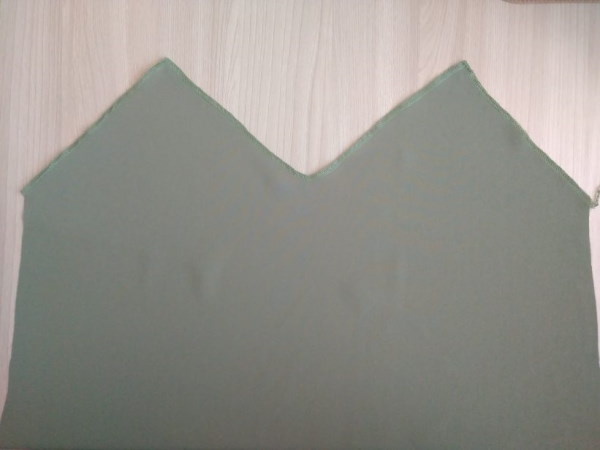
- The lace chosen for decoration should be cut into strips and applied to the upper edge of the pajama front so that it forms a beautiful pattern. The joints of the lace strips should be glued with adhesive webbing and connected on a sewing machine with a zigzag stitch.
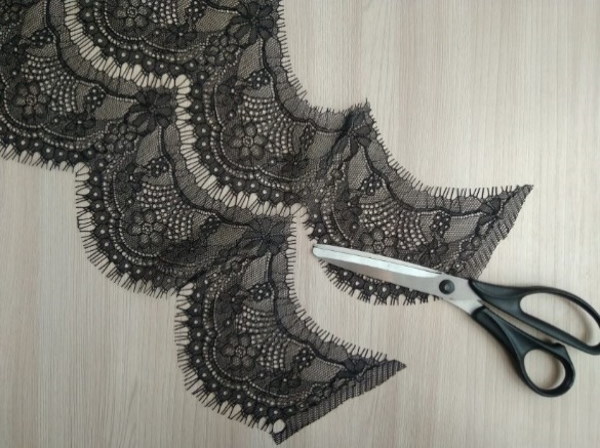
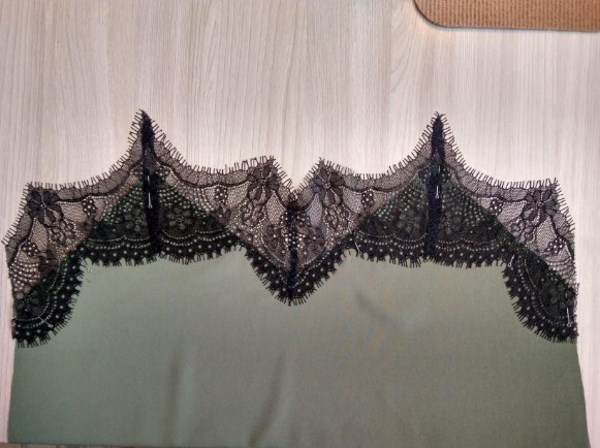
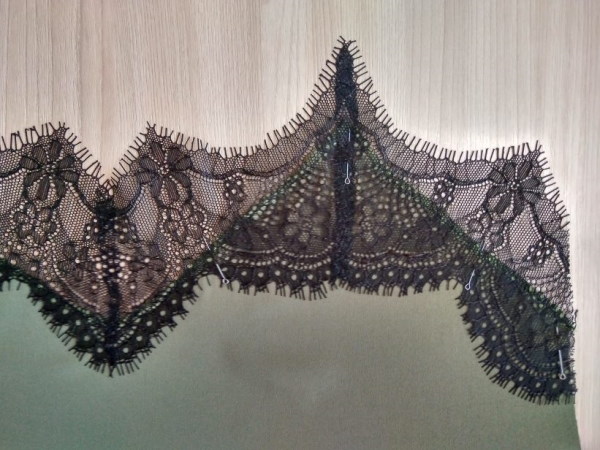
- The prepared lace tape should be applied to the front of the pajama top, pinned or basted using contrasting threads, and then stitched on the machine with a straight seam.
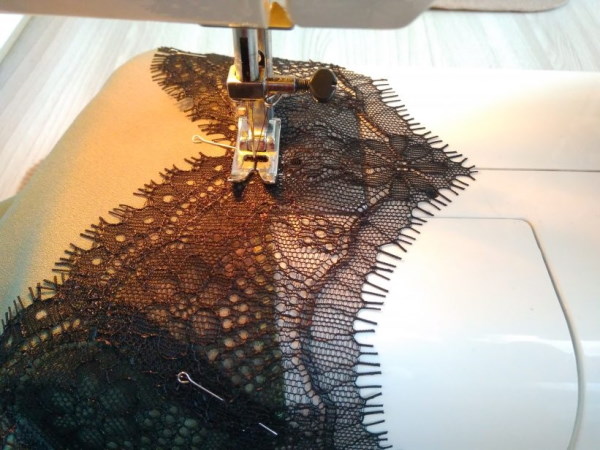
- The top edge on the back of the top needs to be overlocked, then an elastic band needs to be attached to the overlocked edge and secured with pins.
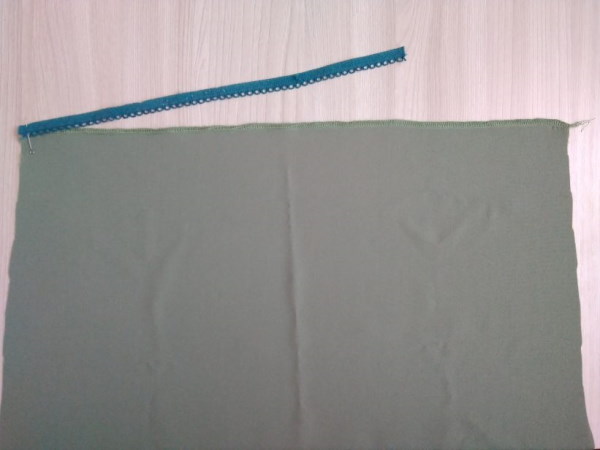
- Having pulled the elastic evenly from one edge to the other, it needs to be secured to the pajamas with a zigzag stitch.

- After moving the elastic to the wrong side of the back, it needs to be stitched with a zigzag stitch from the front side.
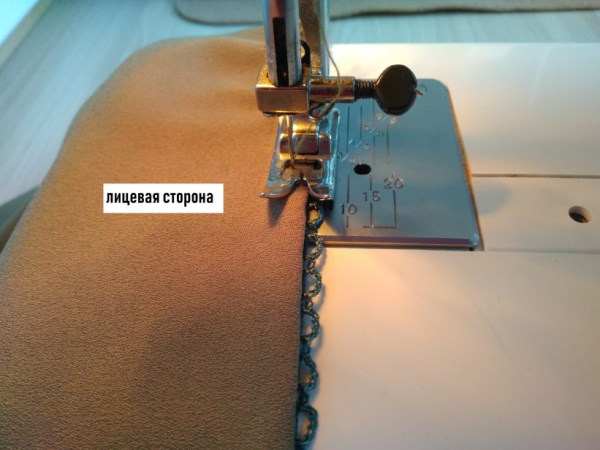

- Having placed the top pieces on top of each other with the right sides facing inwards, they need to be pinned, basted, and then joined with a machine stitch. The resulting side cuts should be processed with an overlock, and then the seams should be smoothed out well.
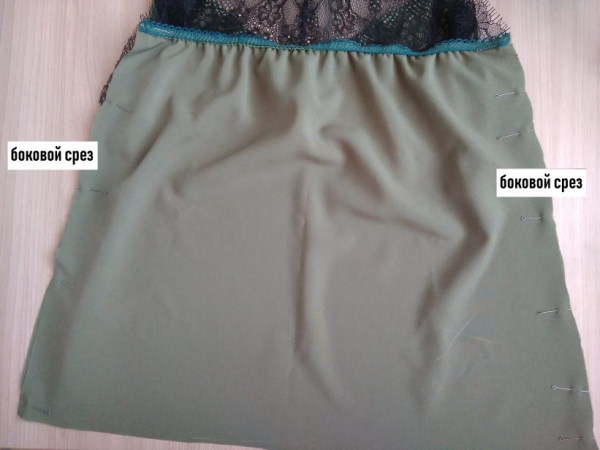
- The bottom edge of the top needs to be processed with an overlock, and then, folding it inward by 1 cm, lay a straight machine stitch on it.
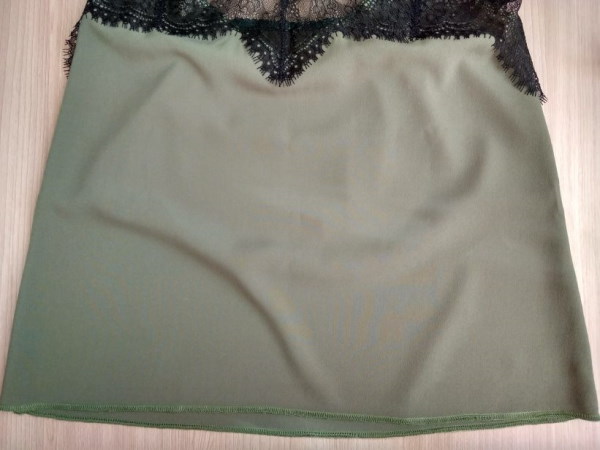

- The lingerie straps should be sewn to the top using a zigzag stitch.
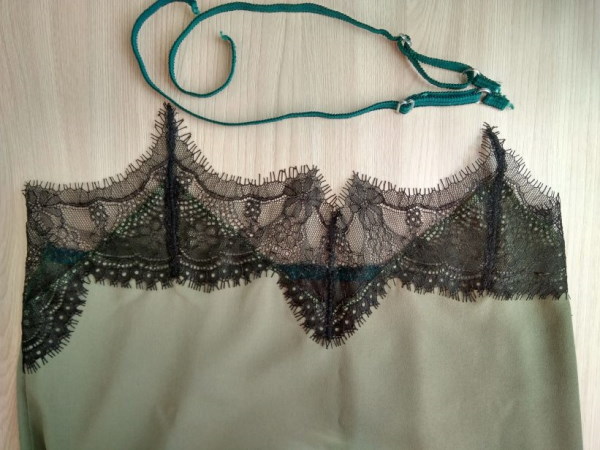

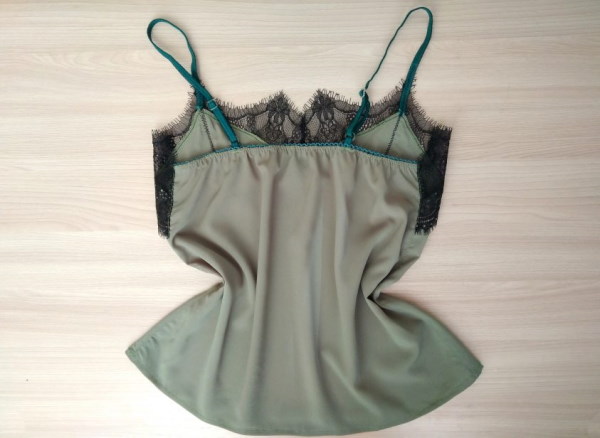
- To make shorts, the product parts need to be placed on top of each other with the right sides together, basted along the side seam, and then stitched on the machine. The product edges should be processed with an overlock, and the resulting seams should be ironed.
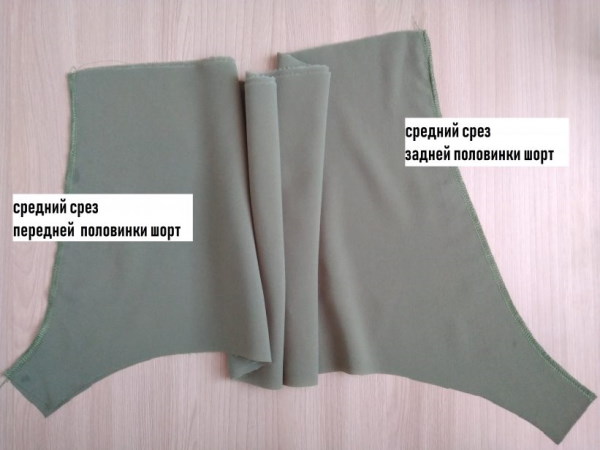
- The bottom of the resulting product needs to be overlocked, the seams ironed and the bottom edge of the shorts overlocked.
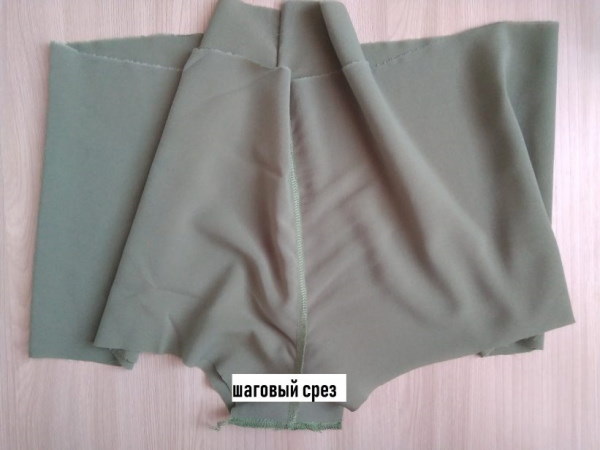
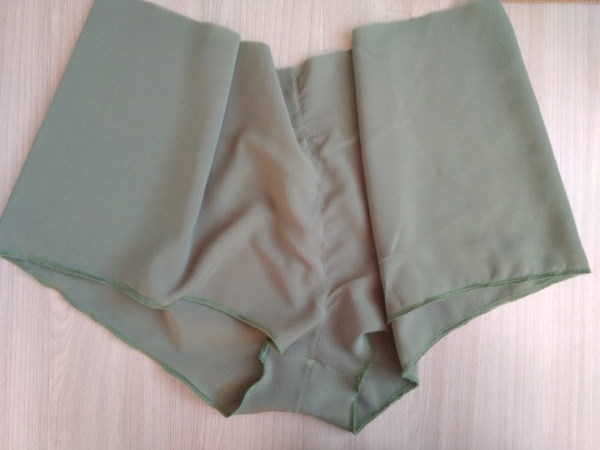
- After cutting the lace, you need to connect it together with an overlapping adhesive web and sew it on a machine with a zigzag stitch.


- The prepared lace must be attached to the trouser leg with tailor's pins so that the seam on the lace remains inside, tacked and stitched with a straight machine stitch.

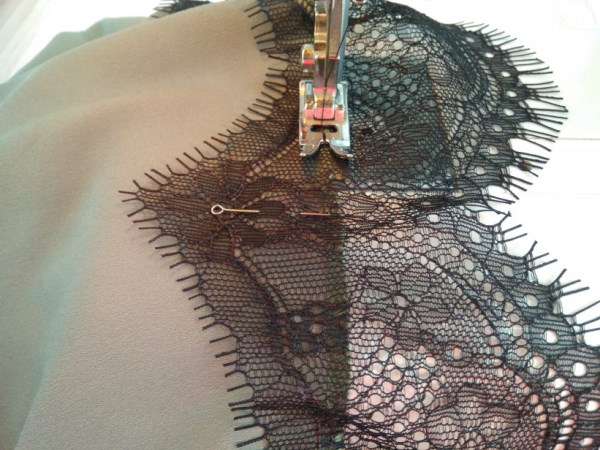
- The ends of the elastic band need to be connected together, and then divided into 4 parts. The same thing needs to be done with the top edge of the shorts, making marks with chalk along the waist line and applying the elastic band to the shorts, attaching it with pins in the places of the marks.

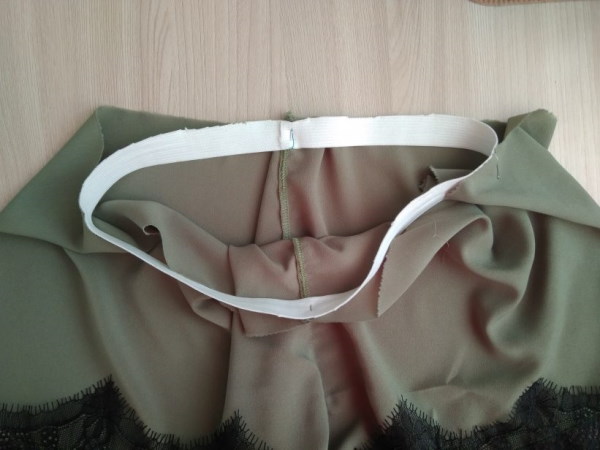
- From the front side, the elastic band needs to be sewn to the shorts, pulling it tightly between the pins.
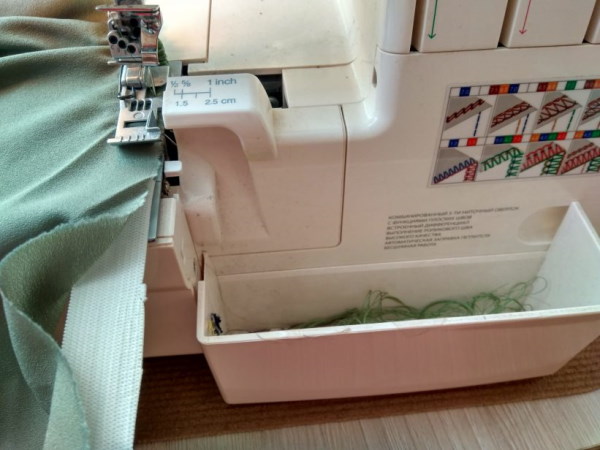
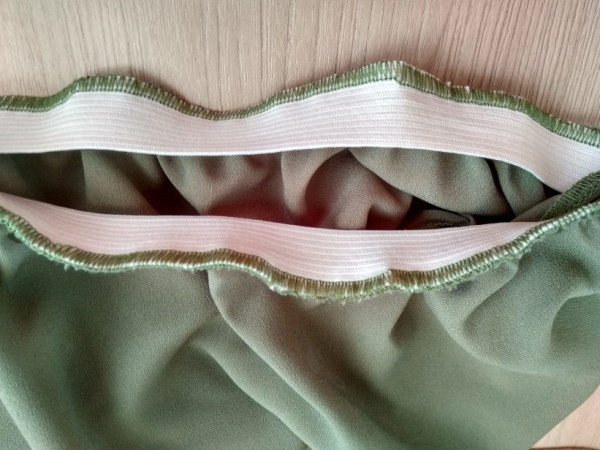
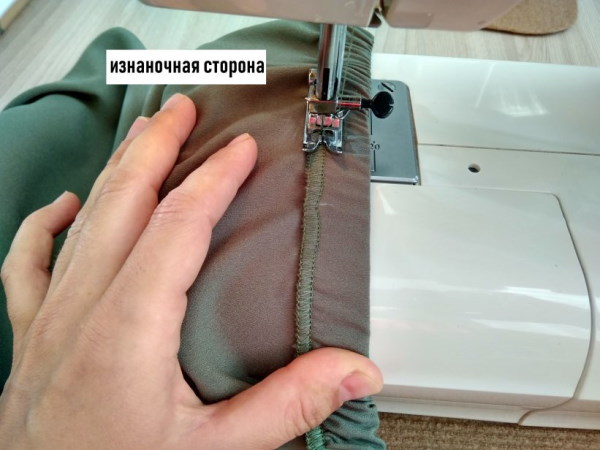
- After folding the elastic from the wrong side, it needs to be sewn to the product using a machine stitch.
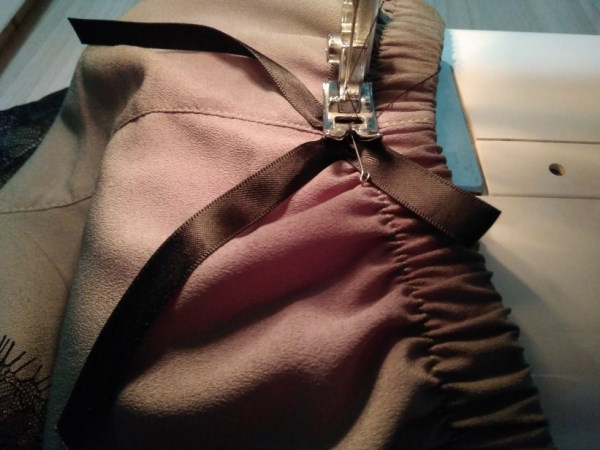

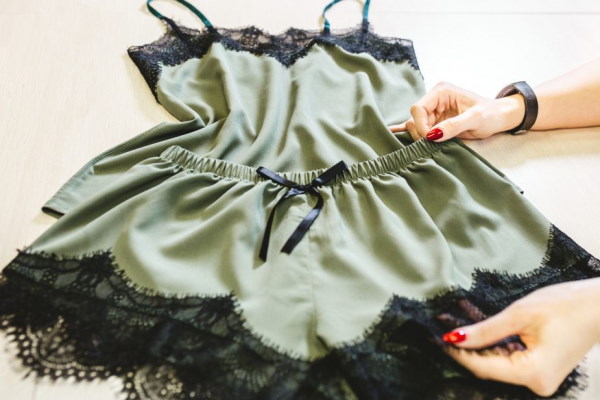
- Using a satin ribbon, attach a bow to the front of the shorts.
Pajamas with shorts and a cotton T-shirt
Women's pajamas with shorts (the pattern of the sleeping set can be printed from the Burda magazine) are made of natural, breathable cotton fabric. In this case, the sleeping set can consist of a T-shirt and soft pajama shorts with an elastic band.
To make cotton shorts you will need:
- 70 cm of any decorated or plain fabric;
- decorative edging 1.5 m long;
- elastic tape in the same color as the fabric, 3 cm wide.
- The pattern for pajama shorts is modeled from the basic construction of trousers by separating the lower part from them.
- The resulting pattern should be placed on the main fabric folded in half with the right side facing up, observing the direction of the grain line, and traced along the contour with a mandatory seam allowance of 1.5-2 cm for each cut. When forming the waist:
- An allowance of 2 cm is added to the width of the elastic band, allowing you to create a low waist;
- An additional 2 cm is added to the double width of the satin ribbon when making a regular waistline.
- From the selected fabric, you need to cut out 2 pieces of shorts and 2 cuffs, adding 1 cm to each piece on the cuts.
- Both legs are folded in half (with the right side inside) and basted along the side (step) cuts. A machine stitch is laid on the finished basting line, and the resulting seams are ironed. The cuts should be processed with an overlock.
- The stitched parts of the shorts are placed one inside the other, aligned along the crotch cut and basted. The machine stitch that holds the parts together is laid exactly along the basting line.
- The resulting seam should be ironed, moving towards the bottom of the garment from the waist line to the seat line. The cuts of the middle seam should be processed with an overlock.
- The elastic band cut to the waist diameter should be stitched along the side cuts in the shape of a circle. To sew it into the product, a drawstring should be made by sweeping 1 cm allowances on the waist line from the wrong side. Having folded the fabric to the width corresponding to the size of the elastic band, you need to insert the prepared tape into it and sweep the allowances along the bottom of the hem.
- When the fabric is stretched to its maximum, the drawstring should be attached to the shorts from the inside, having previously stepped back 1 mm from the fold.
- When processing the bottom line, the decorative edging should be basted onto the cuff along the upper edge, having first aligned the edges of the part. If a fabric with a print is chosen for sewing shorts, the piping should be basted exactly to the upper edge of the cuff.
- After sewing the edging with a machine stitch, you should iron the finished seams (the allowances are ironed to the wrong side), and then stitch the cuff along the side seam and iron the allowances apart.
- The cuff is attached with a basting stitch to the bottom edge of the leg on the wrong side.
- The resulting seams on the edge should be ironed.
- On the seam allowance on the wrong side of the cuff, you need to stitch, stepping back 1 mm from the edge, and iron the resulting seams.
- The cuff needs to be basted to the front side of the product, stitching it onto the seam where the piping is attached or stepping back 1 mm from it. The resulting seam needs to be ironed.
- The finished shorts need to be ironed well, and to define the front of the product, sew a satin ribbon to the middle of the front part.
Any cotton T-shirt can be used as a pajama top, or you can make one using a pattern. In this case, the woman will need to take additional measurements corresponding to the neck circumference (N) and shoulder circumference (S).
To adjust the pattern to the woman's parameters, it is necessary:
| Where to take measurements | How to adjust |
| Along the back line | 1. Measure down 2.8 cm from the VPT point and to the left a distance equal to Osh/4. 2. From the found point, set aside the distance SP to the left. After this, the lines need to be continued downwards by 9 cm. 3. From the point VPT down, you need to put down the measurement Di, and then, moving to the left from the found point, measure a distance equal to Ob/4. 4. From the point VPT, set down the segment VG, then to the left a distance equal to Og/4. 5. From the point VPT measure down the distance BC, then to the left, continue the segment equal in value to /4. |
| On the sleeves | 1. From the point VPT, you need to set off the distance DR down, and then to the left the distance equal to Op/2.
2. From the VPT, 14 cm is measured down and to the left a segment corresponding to the value of OP/2. |
 All found points need to be connected using a pattern. The front part of the T-shirt is constructed similarly to the back pattern.
All found points need to be connected using a pattern. The front part of the T-shirt is constructed similarly to the back pattern.
To make it you need:
- Cut out the product, tracing the pattern onto the fabric with tailor's chalk (pencil) with a mandatory seam allowance of 2 cm.
- Sew the shoulder seams by placing the back and front parts of the garment right sides together and stepping back 1.5 cm from the edge.
- Finish the neck of the T-shirt with a piping taken at the rate of 0.8 multiplied by the width of the neck.
- Iron the sewn-on piping to the neckline.
- Sew the side seams of the product on a machine, process the allowances with an overlock and iron the seams.
- Fold the sleeves 1-2 mm from the edge and sew a straight machine seam.
- Fold the bottom of the T-shirt from the edge to the desired length and stitch.
- All edges and cuts of the T-shirt should be processed with an overlock.
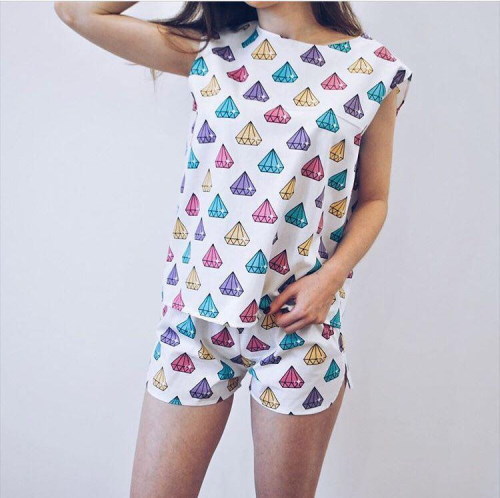
With trousers
Women's pajamas made of a jacket and trousers are made of silk fabric, knitwear, cotton or fleece material. Unlike the summer version, consisting of a top and shorts, such a sleeping complex can be made of warm fabric and used in the autumn-winter, cold season. The pattern of the product is built according to a standard pattern, taking into account the design allowances.
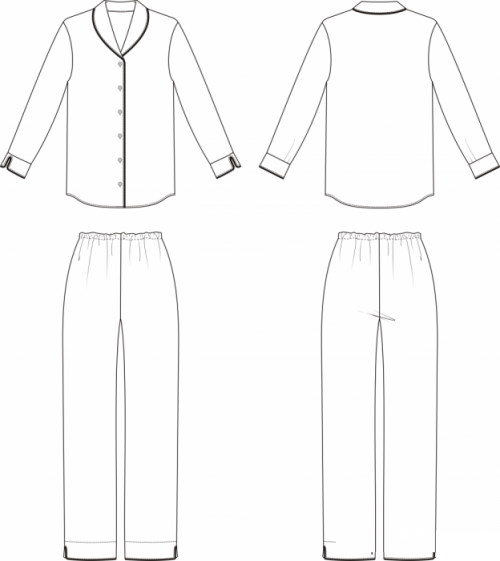
| Part of the pattern | How much do you need to add? |
| For the jacket | Depending on the girl's size, the following are added to the standard pattern:
|
| For trousers | The allowance for the pattern depending on the size is:
|
To make the product you will need from 2.5 to 3.5 m of fabric, depending on the width of the material and the size of the girl.
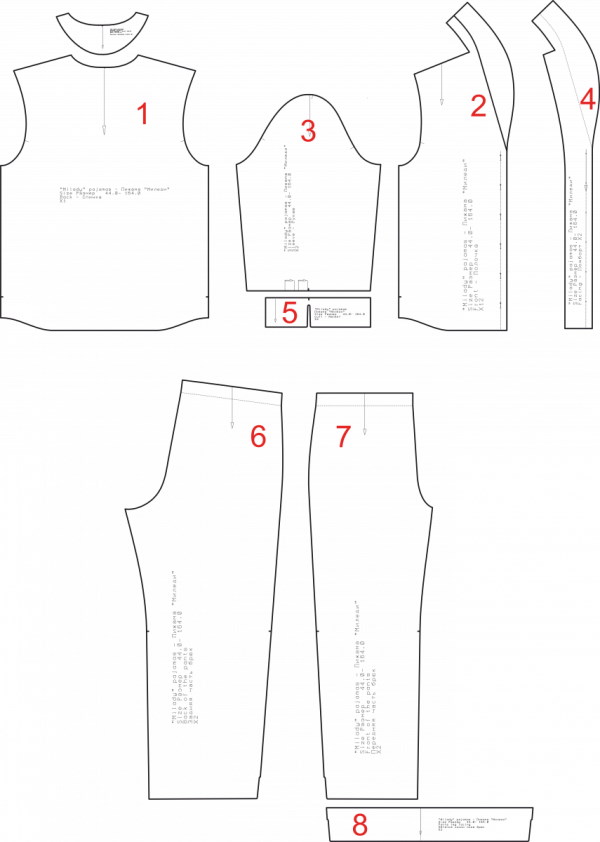
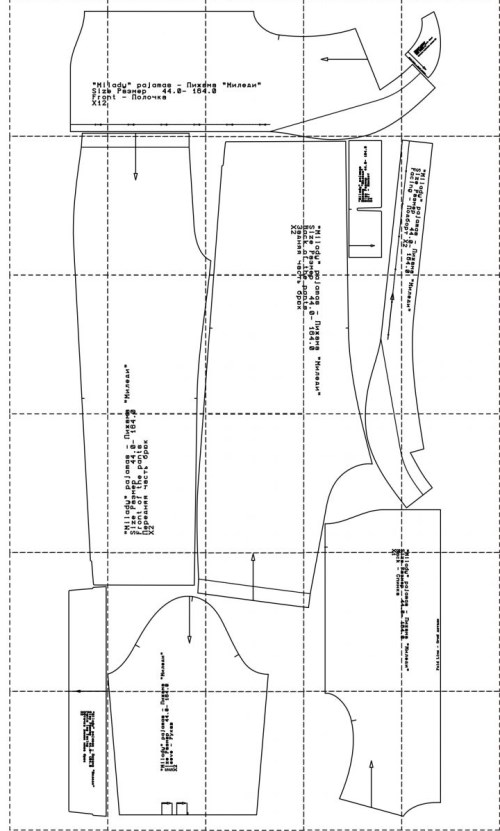
Before starting work, the prepared and cut out paper pattern must be laid out on the fabric and traced along the contour, adding seam allowances to the details, which are:
- 1-2 cm along all connecting sections of the product;
- 1 cm – to the bottom edge of the sleeves and trousers;
- 0.8 cm – to the neckline;
- 2 cm – for the lower edge of the shelf and back;
- 4 cm – to the top edge of the trousers.
There is no need to leave seam allowances for the lower edge of the neck facing and the inner edge of the facings. These edges are subject to overcasting.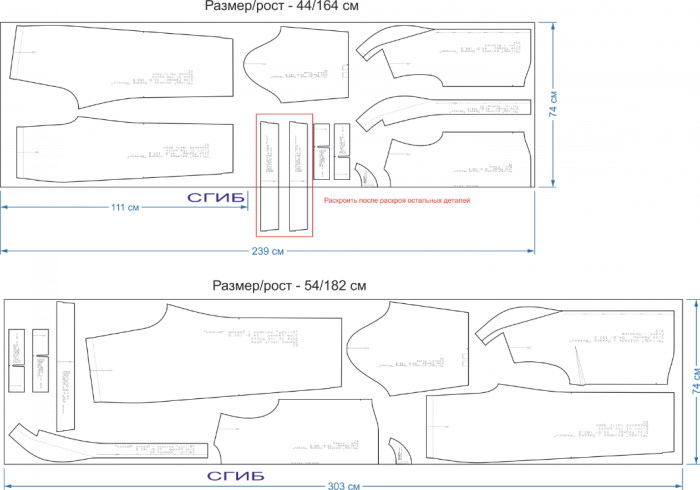
To make the jacket:
- The product parts need to be cut out, and then the middle cuts of the lower collar need to be overcast. The front and back parts need to be placed face to face, connecting the shoulder seams, and then basted and machine stitched. The resulting product cuts should be processed with an overlock.
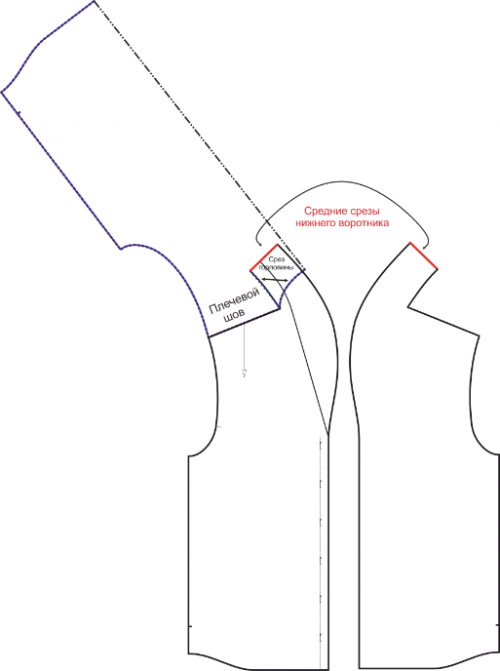
- The shelves along the cuts of the lower collar need to be stitched and the seam allowances ironed out.
- The lower collar needs to be sewn into the back neckline.
- The back neck facing should be treated with interlining with adhesive edges, and the lower side edges should be overlocked.
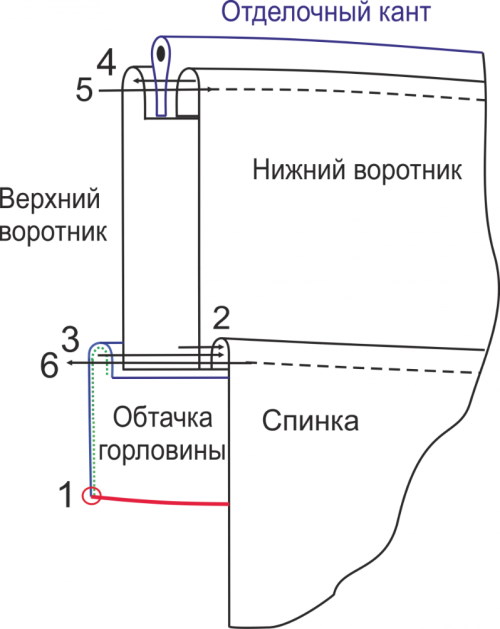
- The middle sections of the lower collar need to be stitched and the seams must be ironed.
- The inner edges of the facings should be overlocked and ironed.
- Having folded the pieces face to face, you need to sew in the piping and overcast the edge of the lapel and the cuts of the lower collar with facings.
- After turning the facing inside out, it needs to be ironed and then hand stitched along the edges.
- The top collar should be sewn into the back neckline, the resulting edges should be overlocked and ironed.
- The folds on the sleeves should first be overcast, then stitched along the bottom and side edges, overcast the edges and ironed. The same should be done with the cuffs.
- After turning the cuffs right side out, they need to be ironed, the edges hand-stitched and first tacked, and then attached to the sleeves along the bottom edge with a machine stitch.
- The sleeves should be tucked into the armholes and the resulting edges should be overlocked.
- The facing shelves need to be stitched along the bottom edge, and the corners need to be turned to the front side.
- After removing the overcasting threads, the finished jacket needs to be ironed.
- On the left side of the product, you need to mark the loops and overcast them, and then sew the buttons to the right side.
To make pajama pants:
- Having cut out the details of the product, they need to be folded in half, connecting the side cuts of the legs, baste them and stitch them on the machine. The resulting seams need to be processed with an overlock.
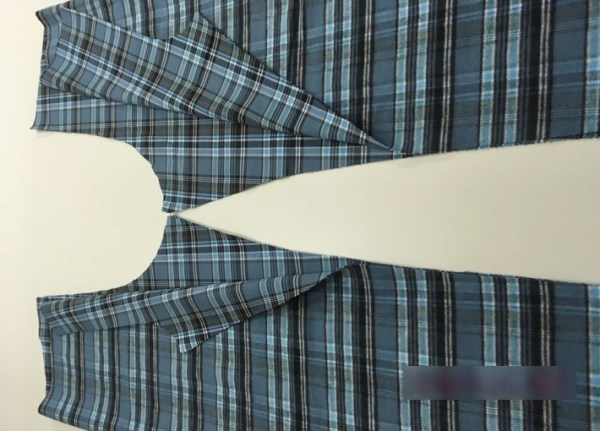
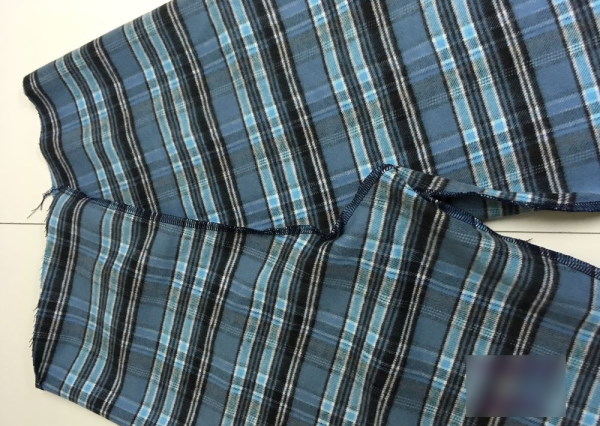
- The halves of the trousers need to be sewn together.

- To make a belt, you can take a strip of knitted fabric 10 cm wide (4 cm when folded), fold it in half and stitch along the edges.
- On the belt you need to make 3 marks: the middle of the front of the trousers and each of the legs. You also need to mark the back seam on the trousers. Having measured the elastic band of the length corresponding to the length of the belt, it also needs to be marked in 4 places and inserted into the belt.
- Using pins, the elastic band at the marked points must be connected to the main fabric, and then machine stitched onto the inside of the waistband so that it does not twist.
- The resulting belt should be sewn to the product. To do this, the belt folded in half with the elastic inside should be placed on the front side of the trousers, aligning the marks. First, the back seam of the trousers should be aligned. The applied belt should first be basted to the trousers, carefully aligning the marks, and then stitched on the machine, pulling the elastic well.
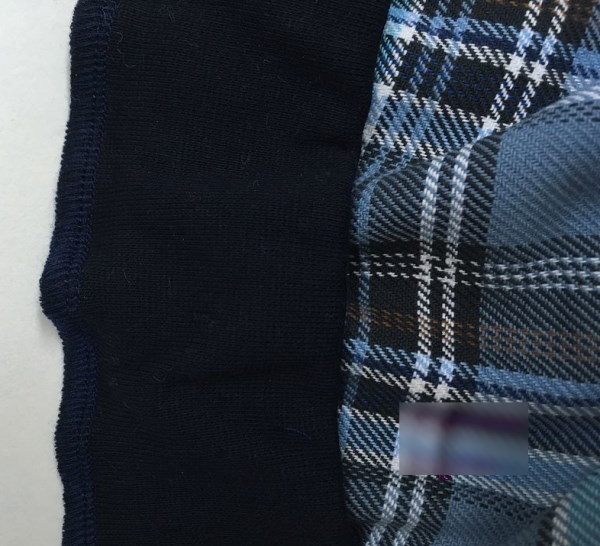
- The lower part of the legs needs to be processed with an overlock, folded to the required length (1-2 cm) and machine stitched.

- To mark the front of the trousers, you can sew a small satin bow on the front side.
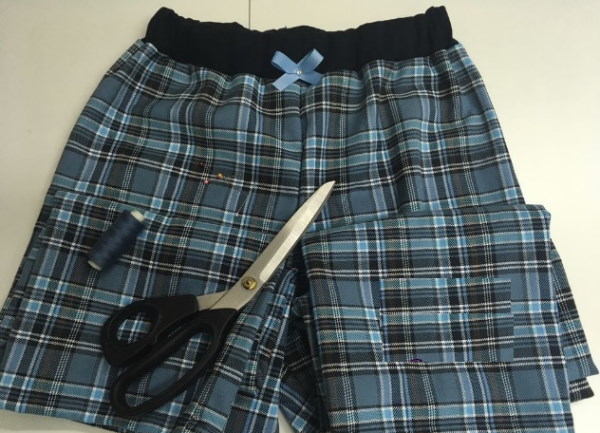
Tips for making pajamas
Women's pajamas with shorts (the pattern of the product is quite simple and can be easily adjusted to the parameters of any female body) does not require special sewing skills.
Experts also advise beginners:
- For making pajamas, choose not only satin or crepe-satin, but absolutely any fabric. The main condition here is the individual preferences of the woman, allowing her to feel comfortable and cozy during sleep. The difference in interseasonal temperatures can be the basis for making 2 versions of pajamas: satin with shorts for the summer period and warm cotton or fleece with trousers for the autumn-winter cold period.
- Stylists and sewing professionals do not recommend choosing a material with flashy prints for making pajamas. In addition to the special brightness of the fabric, it is quite difficult to work with. For lovers of modeling, a material with a dull coloring is best suited.
- The lace selected for decorating pajamas should be soft to the touch and not cause any unpleasant sensations when in contact with the skin.
- A regular pattern of trousers will do for modeling pajama pants or shorts. In this case, the upper part of the product is prepared for sewing in elastic.
- The pattern for a pajama top is almost identical to the pattern for a regular lingerie-style top.
To make the straps of the top, you can use the main fabric or special lingerie straps. When using the main fabric of the product, you will need two strips 5 cm wide and 30-40 cm long. The taken strips of fabric need to be folded in half and ironed, and then stitched along the entire length. The finished straps need to be turned to the front side, ironed and sewn to the pajama top.
Women's pajamas with shorts - a comfortable and beautiful set for sleeping. Made according to a pattern, adjusted in accordance with the parameters of the figure, the set of a top, a vest and shorts can be modeled from any fabric, decorated with soft lace and be not only practical, but also a very beautiful outfit.
Video about women's pajamas
Pattern for women's pajamas with shorts:
